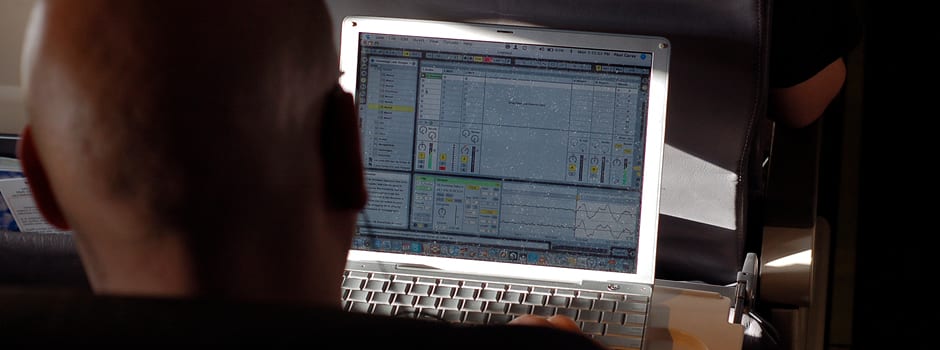The Road Warrior's Guide to Laptop Maintenance
Common sense advice for traveling with a laptop computer
 Credit:
Credit:
Products are chosen independently by our editors. Purchases made through our links may earn us a commission.
If you treat it with care, there's no reason even a cheap laptop shouldn't make a fine co-pilot for at least five years of heavy use. Whether it's a notebook, ultrabook, or tablet, these common-sense tips should keep your portable computer running at your side, all over the world.
Handle with Care
When did we stop treating laptops like important technological tools, and start regarding them as replaceable toys we throw in the seatback pocket or use as placemats for meal service? We leave them in sleep mode for entire trips, plugged into an outlet across the hotel room with the power cord running across the floor. You already know these aren't great ideas, but there are plenty of other dangerous places to keep your laptop that you may not have considered.
Never expose your laptop to below-freezing temperatures for extended periods of time. They're not designed for it, and the LCD screen may malfunction, or crack and leak toxins. High temperatures are worse: They can cause the battery to malfunction and (again) leak toxins, become a fire hazard, or even distend (which can crack the chassis and detach internal adhesives).
For these reasons, never store your laptop or tablet in checked baggage when traveling by plane, and don't forget them in your car during ski trips or beach days.
Pack It Up
When you're on the go, simply sticking your laptop in some sort of protective carrier is an easy and utterly essential preventative measure.
Even a single unlucky raindrop can ruin certain machines. At the very least, use a backpack or duffel bag to keep your workstation safe. Even better, put it in one of those neoprene sleeves, and then put it in your backpack. That'll prevent dust and peanuts from getting into any ports, vents, or optical drives (remember those?). Those dorky-looking hard-shell carriers are probably overkill, unless you're hauling around a super-expensive machine.
The first victim of a roughly handled laptop is usually the hard drive, which stores all your data. Most modern laptops have motion sensors that will protect the hard drive when the computer is jerked around, but they're not infallible. Solid-state hard drives have no moving parts and are largely immune to this flaw, but they're expensive and can't store as much data. A cheaper alternative is to simply turn your laptop off (or put it into sleep mode) before moving it around.
Take Charge
Unibody computers (like the MacBook Air) look great, but their sleek design has a serious downside: The user can't replace any parts. That includes the battery, which is bound to be the first component to give out. Step one, of course, is to vote with your wallet and avoid unibody laptops and tablets altogether. Of course, laptops with a separate battery also allow you to buy a spare battery and get more out of those long plane rides.
Whether you opt for removable batteries or sleek built-ins, give your battery regular exercise: Run it dead at least once per month, then charge to full capacity. And avoid leaving your machine plugged in for days on end—that'll wear out the battery, too.
Don't take chances on questionable power bricks and cords, either. Replace worn or frayed adapters to avoid electric malfunctions that can (in rare cases) damage the internal circuit boards.
Use a Proper Workspace
Though it’s a brilliant lap-warming device, a flat, dry surface is actually designed to be a part of your laptop's passive cooling system. Airflow is everything. If you're working on the plane, that means using the little tray table in front of you—don't just work on your lap.
You'll also need to be wary of dust, especially if you've got a powerful laptop with an intake fan. True, laptops have internal dust filters, but they get clogged over time and some dust is going to seep in. Dust begets heat, and heat is the enemy of every fast computer. And remember: Never use your laptop on a carpet.
Keep It Clean
Your keyboard is coated in layers of sweat and dead skin cells. Yep, it's as gross as it sounds.
The next time you're home for a while, do a little preventative maintenance. If your machine has big gaps between the keys, set the computer at an angle and shoot short bursts of compressed air between the keys to send the grit airborne. If the keyboard is more closed-off, power down the machine and dab some rubbing alcohol on a cotton swab, then gently run it between the keys to clean up some of the mess. To clean the keys themselves and the trackpad, dampen a soft cloth with lukewarm water and rubbing alcohol, and gently wipe.
Whichever method you use, it's always a good idea to turn your laptop off before you clean the keyboard. And if you're using any kind of moisture, leave the machine open and off for a day after you're done to make sure that it can fully dry.
Photos: Hero image by Flickr user "penmachine"; Laptop sleeve by Built NY; Laptop stand by Rain Design

